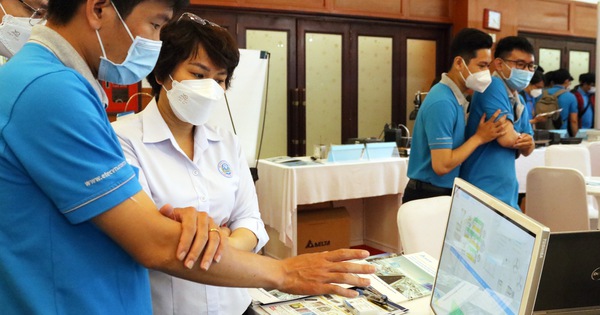The process of keeping James Webb’s $10 billion telescope clean
With sophisticated telescopes like the James Webb, minuscule pollutants in Earth’s environment can also reduce sensitivity.

Illustration of the James Webb telescope in space (left) and a real image of the telescope in the clear space of the center of space (right). Photo: NASA GSFC/CIL/Adriana Manrique Gutierrez/Chris Gunn
The sharper the tool, the harder it is to keep it clean. The same was true of the $10 billion James Webb Space Telescope (NASA) late last year, when it was brought to the Guiana, France, space center to await launch into space.
James Webb always faced many risks while on Earth. The atmosphere, temperature, and pressure around a telescope with a 6.5-meter-wide main mirror can cause its sensitivity to decrease significantly. Prior to James Webb’s launch into space on December 25, 2021, experts put in place a rigorous and sustainable pollution control process. Many space agencies also work together to keep their telescopes and instruments in pristine condition.
“One particular thing about James Webb’s handling of the launch pad is keeping it clean. Unlike the Hubble, whose lenses are encased in a visor, James Webb operates only with the shading of the sunshade in the air,” said NASA scientist Randy Kimbel.
Earth’s atmosphere is filled with particles, living organisms, and lots of microscopic debris that can leave marks on everything from windows to the human immune system. When a telescope as sophisticated and expensive as James Webb’s is exposed to Earth’s atmosphere, its environment must be kept as clean as possible.
“This is to ensure that James Webb’s mirrors and blinds are not contaminated by small particles or molecular membranes and reduce the sensitivity of the telescope,” explains Kimble.
“Experts from NASA, the European Space Agency (ESA), Arianespace and the French Space Agency (CNES) have worked together to clean the launch facility according to James Webb’s stringent requirements. NASA’s Goddard Space Flight Center also offers portable HEPA filters to improve ambient air pollution control,” added Kimble.
The seven-week pollution control where James Webb was stationed at the Guyana space center was a resounding success, according to Alan Abeel and Eve Woolridge, two pollution engineers at Goddard.
“NASA’s team of pollution control engineers and technicians turned a facility not designed for James Webb into a well-controlled clean room, not only with HEPA filters but also by covering and wiping, removing, packing, and sealing items that do not meet the telescope’s hygiene requirements. tight, then clean all surfaces daily,” Woolridge and Abeel share.
The team of experts also completed the difficult task of inserting the giant James Webb telescope into a rocket. “We claim this is not only the largest pollution control group in the world doing this kind of work, but also the best and the hardest,” Woolridge and Abeel said.
In the final weeks leading up to launch, all major ground testing has ended, with only non-invasive electrical testing continuing. If steps are not taken to keep James Webb clean, free of contaminants, dust, and other particles, it could result in some tests failing.
Posted by James Webb first test picture about distant stars and a series of ancient galaxies from the active space point L2. This shows that the professionals have accomplished an important task of keeping James Webb in tip-top shape.
Kam Thao (Based on Interesting Technique)
at Blogtuan.info – Source: vnexpress.net – Read the original article here



